The Black Pagoda :Konark
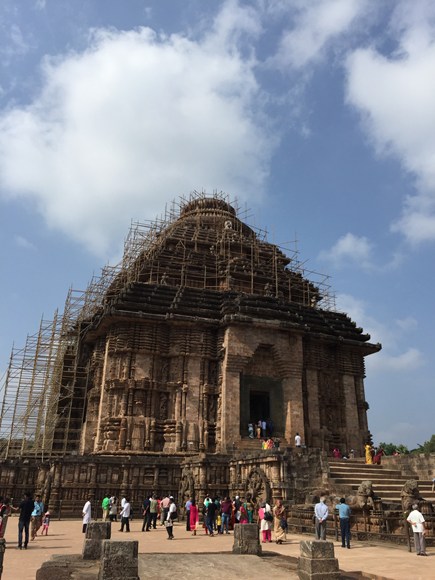
While we value monuments all over the world, we sometimes forget that there are equally good monuments in India too. They are many but the sun Temple of Konark occupies a unique position. Included in the UNESCO World Heritage list since 1984, this 13th century Temple is an eye opener when we reach there. Popularly known as Arkakshetra this temple along with Bhubaneswar and Puri forms a unique triangle on the tourist map of Orissa. Konark means corner of the sun .There are many theories regarding the construction of the temple, but one which appears probable and the most accepted is that it was constructed by Narasimha Deva I, (1238-1264) of the Ganga Dynasty. His Kingdom stretched from Ganga in the north to Godavari in the south and it was during this time that Odisha witnessed the zenith of prosperity. The temple was dedicated to the sun God. A copper plate inscription (verse 86) of Narasimha Deva II dating 1295 AD says that "King Narasimha I built at Kona-Kona a place of great renown, a temple for the Sun to live in with the other Gods".
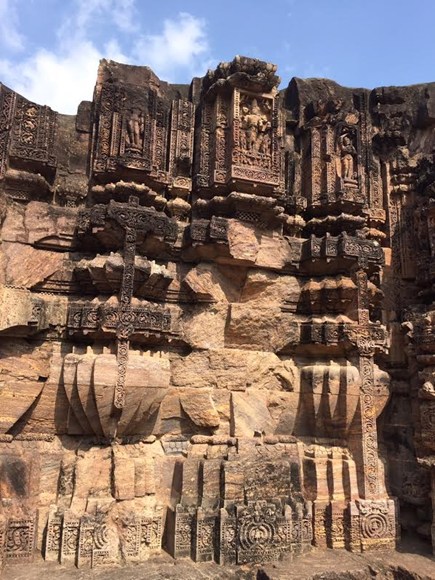
The antiquity of Konark as a famous pilgrimage center for sun workship is mentioned in various Puranas .There is also a story that Samba the son Sri Krishna and Jambavati who had ridiculed Narad had to do his penance at Maitreyavana /Mitravana near the river Chandrabhaga for 12 years to propitiate the Sun God. This Mitravana could be Konark as it is believed, though the Chandrabhaga river today is much smaller river.
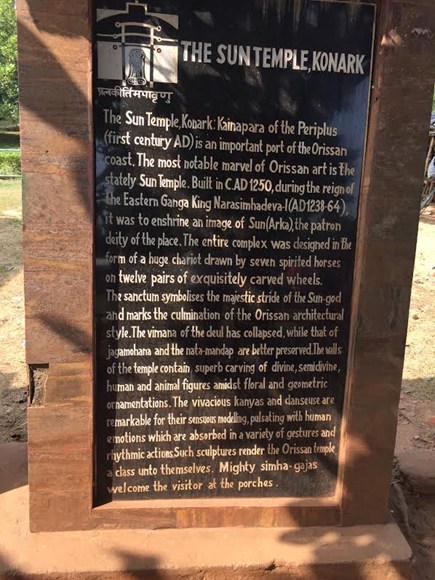
Various theories have been propounded regarding the purpose of selecting this site and erection of such a mammoth Temple or monument at Konark.This place as mentioned above enjoyed religious sanctity from the earliest of times.According to some observation, the mother of Narasimha Deva, suggested him to construct this temple here as this place was one of the few places left which had no big shrine. Sun is believed to be the healer of leprosy and according to some presumptions Narashima Deva constructed this temple as worthy thanks for his healing from this disease. Other theory says that the King got the temple constructed out of a gratitude upon being blessed with a son, whom he ideally named as Bhanudeva(Sun God). Some others say that this was to signal his victory against Tughral Tughan Khan. The Bengal Muslim rulers had made attempts to destroy the Hindu shrines or rob them in this area.His(Narasimha's) victory over Muslim rulers had augmented his resources and status.
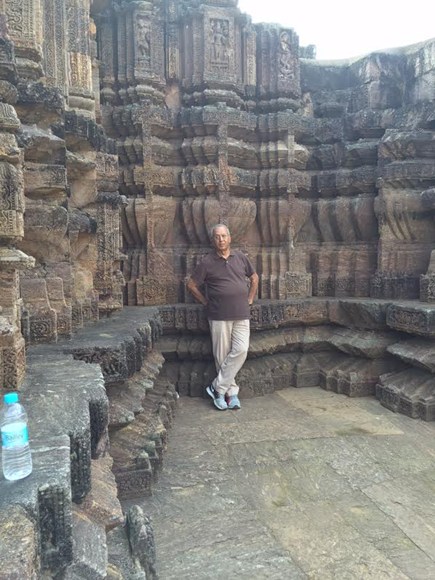
The King appointed Shivai Samantara Mahapatra as Superintendent for the construction of this magnum opus, while the name of Chief Architect (Sutradhar) was Bishu Maharana. It took 12 years,ten months and fourteen days to finish the construction.The image of Surya (Sun) was installed on Sunday the seventh day of Magha Sukla Paksha of 1258 AD.It is believed that 1200 Shilpins(artisans) worked on it non stop and its cost was defrayed by twelve years of revenue of the State.

The original temple had a main sanctum sanctorum (vimana) which was believed to be 229 feet tall. Due to the weight of the superstructure, and weak and sandy soil of the area,vimana fell in 1837. There could be many other factors responsible for the collapse of the Vimana like the effect of a strong gale or earthquake etc. The audience hall (Jagamohana) still stands though it is 128 feet tall and the principal structure among all the ruins.The dance Hall (Nata mandira) and dinning Hall (Bhog Mandapa) are also surviving.
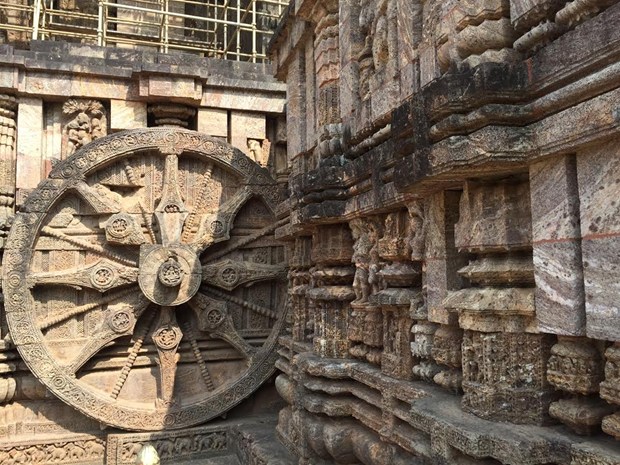
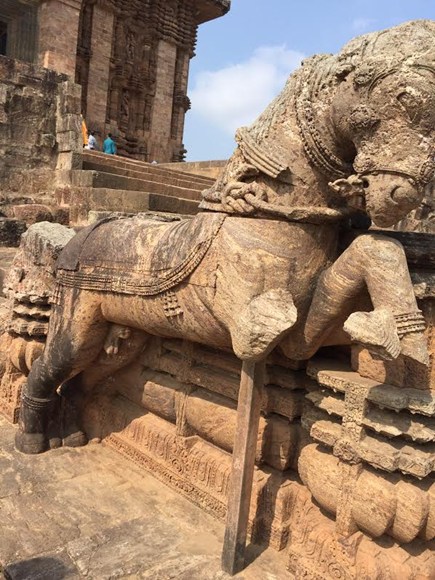
The temple has been built in the form of giant ornamented chariot(Ratha) with 12 pairs of elaborate carved wheels( 3 meters wide)and pulled by 7 horses,4 on the right and 3 on the left.Built in the traditional Kalinga architecture, and Khondalite rocks,it is carefully oriented towards the east so that the first rays of the sun strike the principal entrance of the temple. The wheels of the Temple are sundials which can be used to calculate the time.
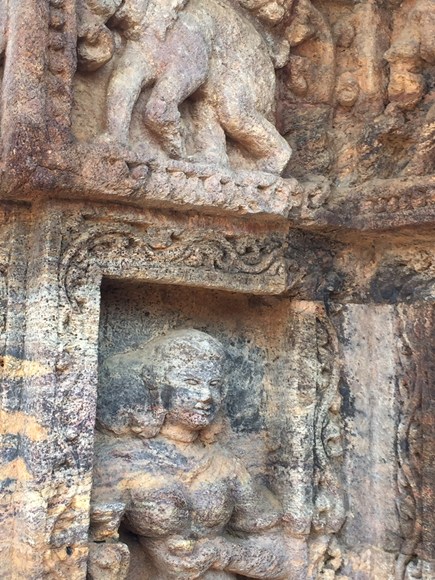
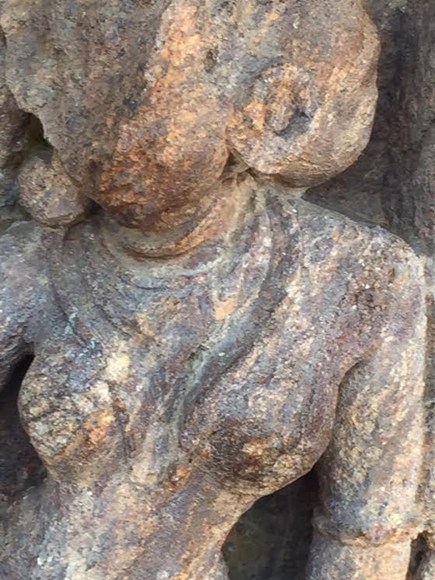

As in all ancient temples, this temple too has intricate art work,precisely chiseled figures and some erotic sculpture. According to an expert, eroticism was not infused as per some plan, but it was the imagery of the artists and the architect of those times. People of that era used to roam about in minimum clothes and partial nakedness was accepted way of life.
Over the centuries the temple has been looted and degraded by Hindu and Muslim rulers, besides the Govt of the day and the people . It is said that Kalasa which was made of copper and the Padmadhavaja (lotus finial) was carried away by the Muslim rulers of Bengal in the course of their attack in 1568 AD.In 1627 the Raja of Khurda removed the sun idol from the temple and moved it to the Jagannath Temple at Puri. Stones and idols were frequently removed by the people affecting the foundation of the monument. Various efforts were also made during the British rule to conserve the Temple including planting of casuarina and punnag trees to act as buffer against the sea wind etc.
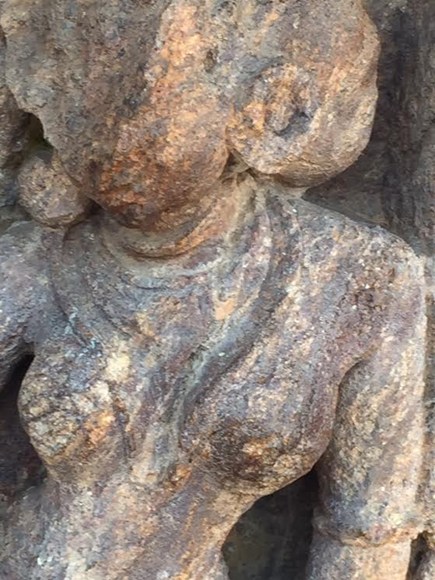
Though the Temple is not in a good shape, though the process of restoration is on, its beauty and charm is immense to attract tourists from all over the world.It is a splendid gem of Odisha and India and its beauty can not be described by a layman like me. When you come back after the visit, you feel you have not seen much and much more is yet to be seen.It has to be revisited for it is a beauty, a joy , and a sacred things with an endless charm.
NOTE: The English called it a Black Pagoda and the Puri Temple was called a white Pagoda. All pictures are mine but the text is partially taken from various historical sources. As per my information, it is not a temple as no worship is carried out there and hence shoes are allowed. There is a story about Dharmapada ,the son of Chief architect Basu Maharana , who leaped to death from the height of the temple to save the honor of his father. I could not get the complete story and hence have not elaborated it.